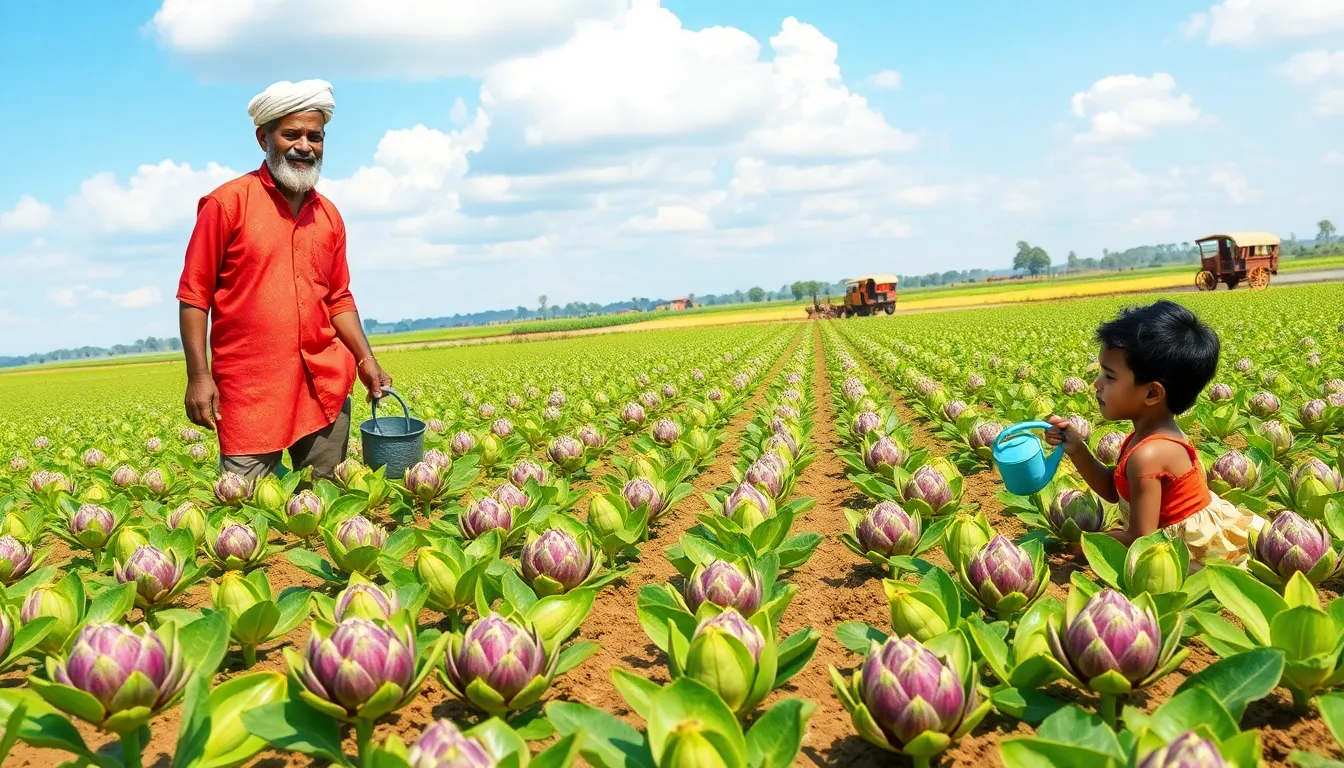Artichokes are becoming popular among Indian farmers and gardeners. This unique vegetable, native to the Mediterranean, is known for its health benefits and culinary uses. As more people become health-conscious, artichokes are making their way into Indian kitchens and gardens.
Artichokes are not only tasty but also beautiful. They can grow tall, reaching heights of 5 to 6 feet. With their striking appearance, they can also serve as ornamental plants in gardens. Growing artichokes can be a rewarding experience, both in terms of beauty and nutrition.
To grow artichokes successfully, it is important to understand their growing conditions. Artichokes prefer mild climates and can be grown as perennials in USDA zones 7-10. In colder climates, they can be grown as annuals or in pots that can be moved indoors during winter. If you want to enjoy artichokes in colder areas, starting them indoors is a good idea.
When starting artichokes from seed, it is best to sow them indoors. Start 12 weeks before the last expected frost. Use biodegradable pots filled with a lightweight seed-starting mix. Sow the seeds about 1/4 to 1/2 inch deep. It is important to thin the seedlings to allow the strongest plants to grow. Thin to one plant per pot once the leaves appear.
Once the seedlings have four true leaves, they need to be hardened off. This means gradually exposing them to outdoor conditions over 7 to 10 days. After hardening off, transplant the seedlings about four weeks before the last frost date. Make sure to choose a spot with full sun and well-drained, rich soil.
Artichokes are heavy feeders. They require regular watering and monthly feeding with compost or balanced fertilizer. They grow best when not crowded, so space them about 4 feet apart. When properly cared for, artichokes will produce their first buds in the first year, with more buds appearing in subsequent years.
Harvesting artichokes is a critical part of the process. It is best to pick the buds before they start to open. Use a sharp knife to cut the central bud about 2 inches below it. After harvesting the main bud, side shoots will produce smaller buds that are also edible and tasty.
To store artichokes, quickly cool them in ice water, dry them, and place them in a sealed container in the fridge. This method helps keep them fresh for up to two weeks.
In colder climates, protect the plants during winter by cutting them back to about 8 to 12 inches above the ground and covering them with mulch. In milder climates, cut the plants to the ground and mulch them to protect them from the cold.
In conclusion, artichokes offer a great opportunity for Indian farmers. With growing demand for healthy, organic foods, cultivating artichokes can be a profitable venture. Their unique taste and nutritional benefits make them a valuable addition to any garden. With proper care and attention, artichoke cultivation can lead to a bountiful harvest and a successful farming experience.

